Spiderwebs are considered intricate works of Nature’s art, and without a doubt they’re also my favorite photography subjects.
If you've ever wandered through a park or your backyard early in the morning and noticed a glistening spiderweb hanging between branches, you know how captivating they can be.
One of the most common questions I receive is ”Where do you find all these gorgeous spider webs?”
In this post I’m going to reveal the secrets of finding them and how to capture their beauty with your camera. Here’s how to get started!
How to find spiderwebs?
To successfully find spiderwebs, weather, timing and location are the key factors.
Best time of the day and weather conditions:
Early mornings are the best time to spot spiderwebs. Preferably foggy mornings with no wind. On mornings like these, dew collects on the silken threads, making them more visible and photogenic.
The soft sunlight shining through the fog adds a magical, ethereal quality to the webs. Even gloomy, fog-filled mornings have their own charm, creating a moody atmosphere perfect for dramatic images.
Windy weather is your worst enemy here - spiderwebs are delicate and the slightest breeze can ruin them. Look for still, calm conditions for the best results.
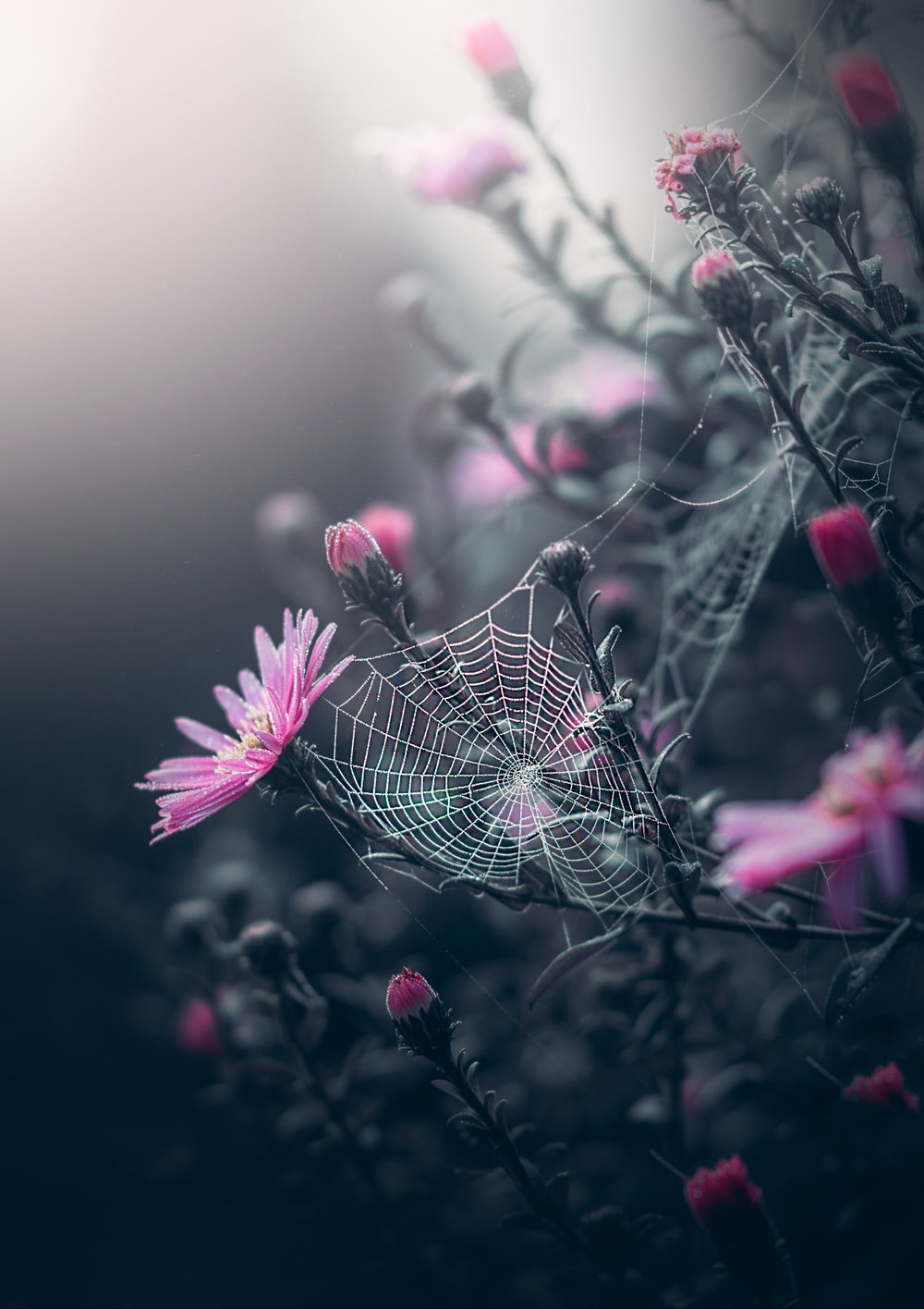
Yes, they're pretty much everywhere! This one was beautifully woven between the Aster flowers.
Best locations:
Spiders spin their webs in areas where they are likely to catch prey, which gives you a clue about ideal locations. In general, it’s possible to find them almost anywhere if there’s enough vegetation, trees or bushes. Some of the most common places I’ve found them include:
- Gardens, parks, graveyards, wooded areas:
Trees, shrubs and other tall vegetations are perfect for web-building. Walk slowly and carefully around bushes, tall grass, or flower beds. The webs are easier to see when the light is coming from behind them, so pay attention to the sun’s position.
- Open areas, like fields, bogs and meadows:
These spaces are ideal for catching prey and common places to form fog overnight.
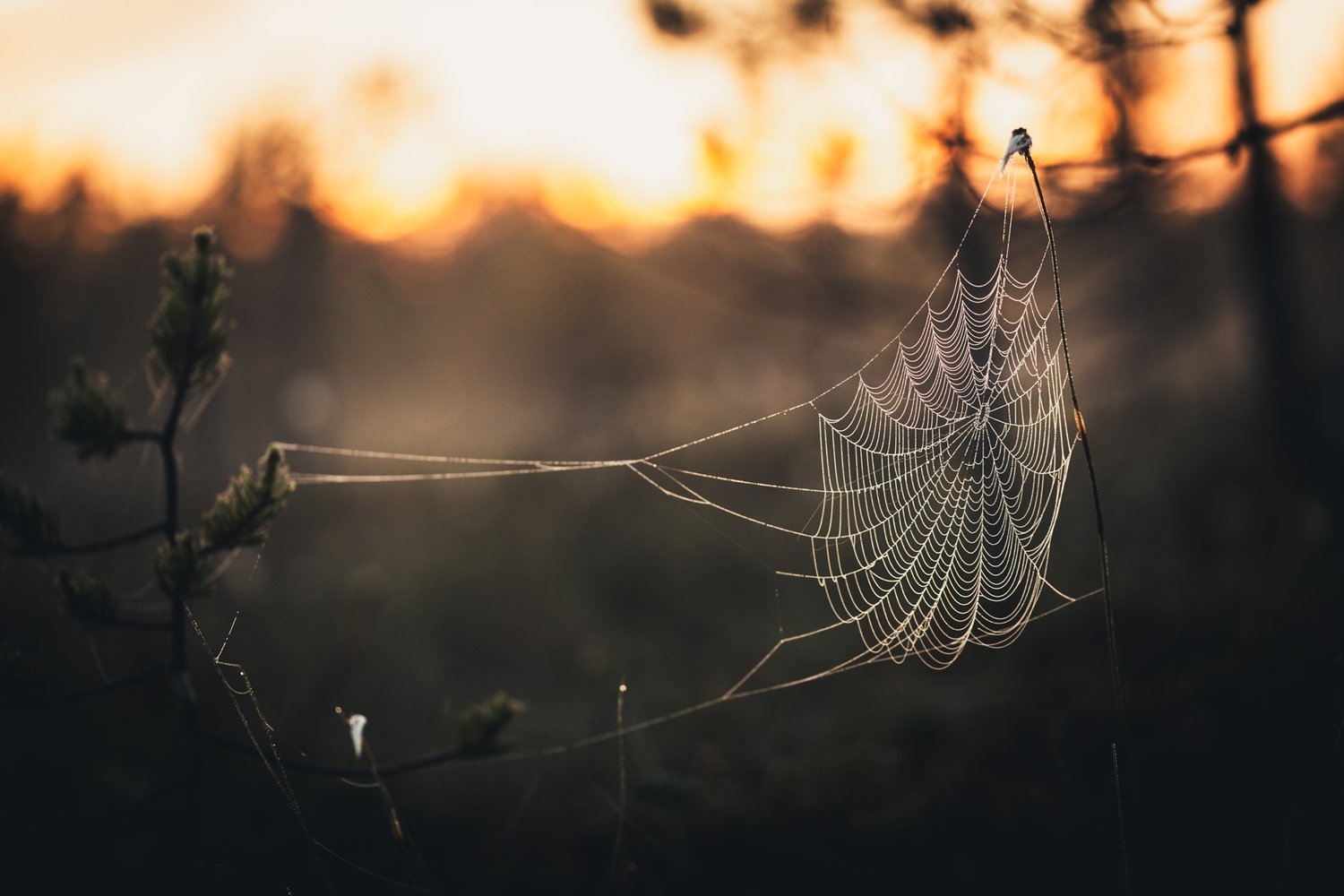
This web was captured in a bog at sunrise.
Gear and settings for spiderweb photography
Photographing spiderwebs requires some planning and patience, but with the right tools, you can capture breathtaking shots.
I recommend using a full-frame camera as it performs better in the low light conditions of early mornings. A macro lens is incredibly useful, but it’s not essential. A fast telephoto lens will also work. For spiderwebs, I prefer choosing a long focal length as it creates a sense of compression to the image and blurs the background. 95% of my spiderweb images are captured with Sigma 105mm or Sigma 150mm f/2.8 macro lens.
Use a wide aperture for shallow depth of field, but make sure you got the center of the web in focus. The shutter speed should be at least 1/250s to freeze any motion as the spiderweb can move even from the slightest wind. Stick with the lowest ISO you can to avoid grain. On darker, gloomy mornings you may need to crank up the ISO, but don’t worry - Lightroom or other editing software can help with noise reduction later.
Now that you’ve found your spiderweb and set up your camera, it’s time to think about composition:
Lighting
One of the most effective ways to photograph spiderwebs is with backlighting. Position yourself so the light is shining through the web. This will highlight the silken strands, making the web appear to glow against the background. Side-lighting is also a great option for softer, more subtle effects, gently emphasizing the texture of the web.
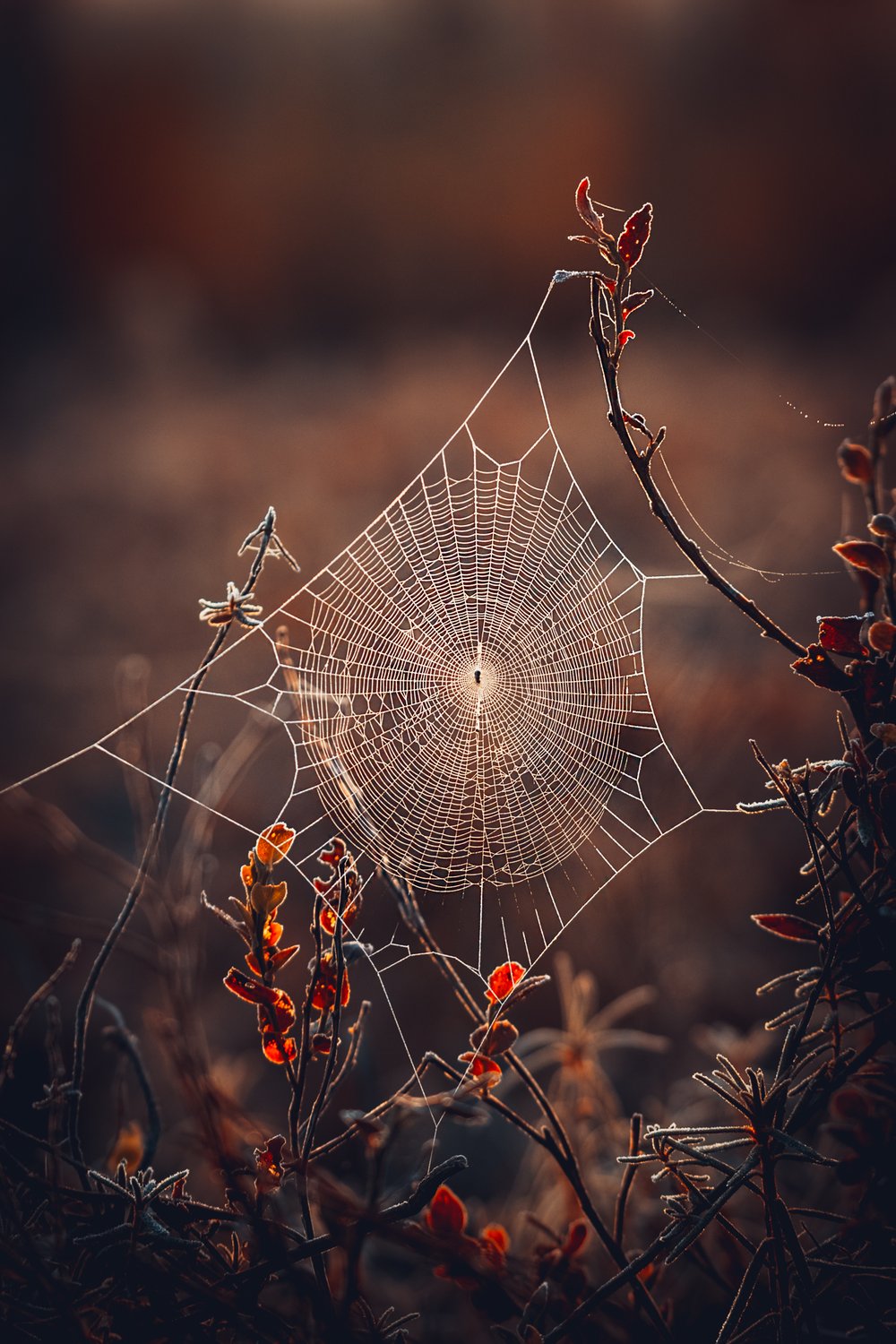
The spiderweb was actually covered in frost, which made it more visible.
Framing and Perspective
For most of my spiderweb shots, I position myself directly in front of the web. This perspective showcases the entire design and symmetry of the web.
If you’re using a macro lens, don’t hesitate to zoom in and focus on individual details like dew-covered strands or the tiny droplets.
Background
Pay attention to what’s behind the web. A dark or blurred background helps the web stand out more clearly. You can use the wide aperture mentioned earlier to isolate the web and blur out distracting elements in the background.
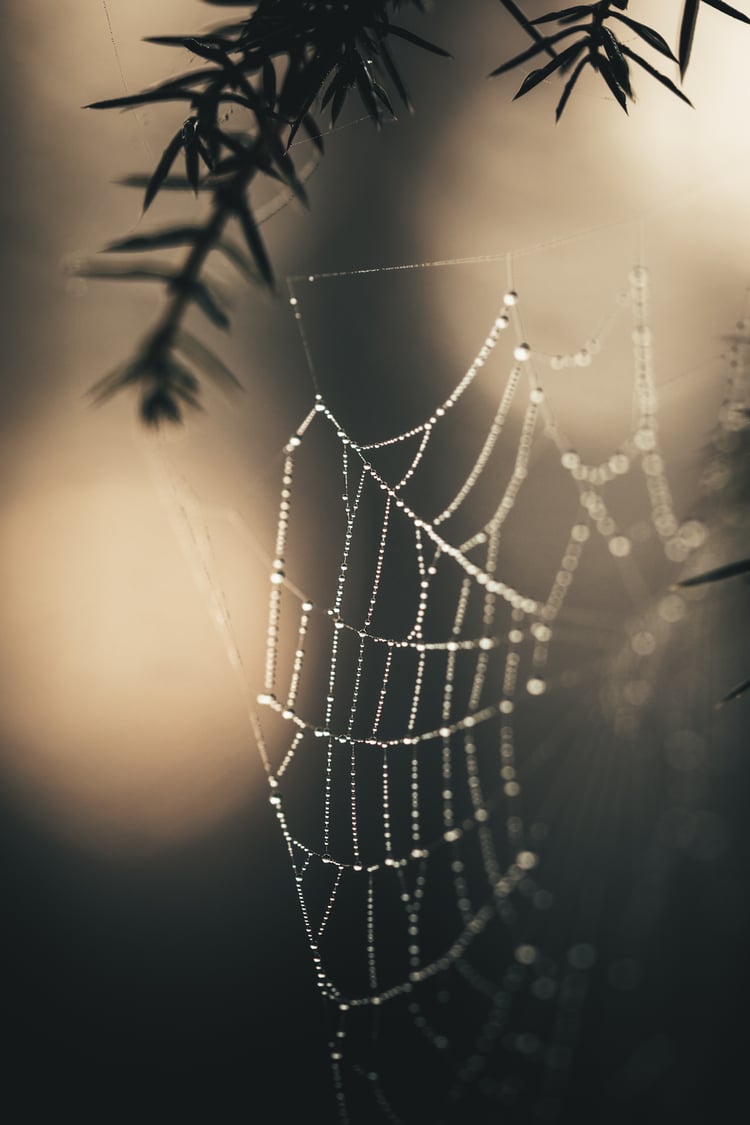

Final Thoughts: Be respectful of Nature
While photographing spiderwebs can be a fun experience, it’s important to remember that these are not just works of art - they are an integral part of a spider’s life. Be cautious not to disturb or damage the web.
I hope you found these tips helpful! Let me know in the comments if you have any questions or share your own spiderweb photography experiences. You can also send me a message on Instagram. 😊
Happy shooting!


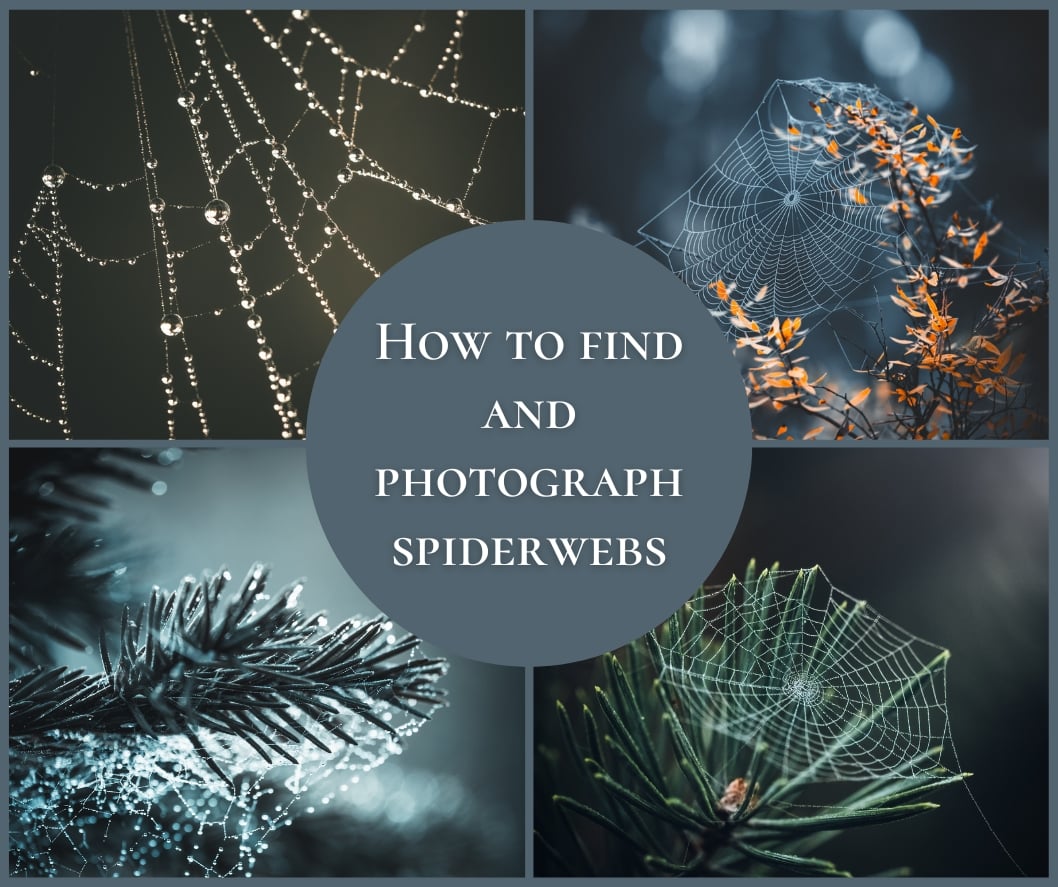
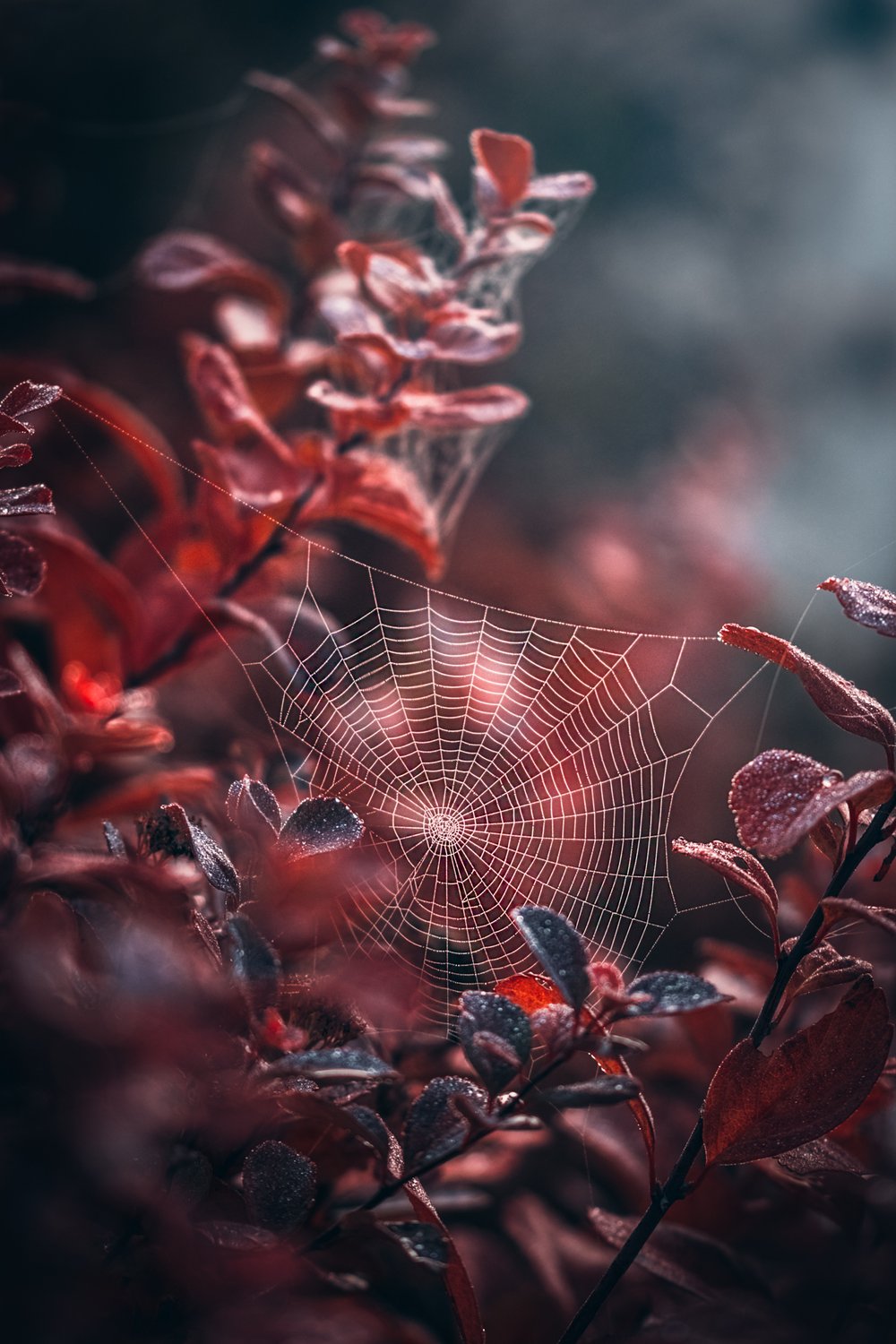
Comments ()